Chapter 1, Part 9
In the early ninth century AD under the rule of Samaratungga, the union between Medang and Srivijaya grew stronger, the kingdom was largely in peace, allowing artistry and craftsmanship to flourish. However unlike the expansionist Dharanindra, the new king ruled his kingdom in a more pacifist way, focusing on spreading the teachings of the Buddha rather than incorporating other kingdoms in the region into its sphere of influence. He had one daughter and one son, named Pramodhawardhani and Balaputra, respectively. But that is in fact only one version of the story.
The scarcity of inscription or written document that survived over the course of centuries regarding the Sailendras – or in the case of the availability of them, the contradicting information from different inscriptions – leads to confusion among historians. Some say, for instance, Balaputra was Samaratungga’s son, hence Pramodhawardhani’s brother. But according to others, he was the son of Samaragrawira (Samaratungga’s father), making him Pramodhawardhani’s uncle. However another theory suggests that Samaragrawira and Samaratungga were in fact the same person.
Upon Samaratungga’s death, Pramodhawardhani was next in line to claim the throne. However there was one problem: she was married to a Hindu king of the Sanjaya dynasty (or according to others: Hindu Sailendras) named Mpu Manuku who was later known as Rakai Pikatan. The return of the Sanjayas to the royal court of Medang threatened the close alliance between Medang and Srivijaya. Some believe the new Hindu king fought Balaputra, resulting in the latter’s retreat to Sumatra. Others believe that there was never any war between the two, and Balaputra’s shift to Buddhist Srivijaya was on his own will.
Nevertheless the marriage of Rakai Pikatan, a Shaivite Hindu, with Pramodhawardhani, a Mahayana Buddhist, was seen as a further effort to unify the people of Medang. Rakai Pikatan’s co-reign with his wife not only promoted Hinduism but also ensured Buddhism remain an important religion in the kingdom. During their co-reign many new Hindu, as well as Buddhist, temples were constructed, often not too far from each other symbolizing harmony of the two religions at that time. However to mark the resurgence of Hinduism in the kingdom of Medang, a new, majestic Hindu temple was envisioned to match Borobudur’s splendor. The new monument, built only a few decades after the completion of the Buddhist colossal stepped pyramid, was called Shivagrha, ‘house of Shiva’, today’s Candi Siwa at Prambanan temple complex.
Taking the location near Manjusrigrha (Candi Sewu), the former royal temple of Medang, Shivagrha was built to the height of 47 meters – 12 meters taller than Borobudur. The main temple was erected during Rakai Pikatan’s reign. However his successor added more structures and enlarged the entire compound to consist of more than 200 temples.
Two other temples were later added to the south and north of Candi Siwa, dedicated to the other Trimurti gods: Brahma and Vishnu (Wisnu), respectively. In front of each of the three, vahana (vehicle) temples were built: Nandi the bull in front of Candi Siwa, Angsa the swan in front of Candi Brahma, and Garuda the bird warrior in front of Candi Wisnu. On the corners of the main temple ground once stood small temples of the Lokapalas, guardians of the directions, also called Astadikpala (guardians of eight directions).
Stories from the Hindu epic Ramayana were carved on Candi Siwa and Brahma, while on Candi Wisnu the story of Krishna, one of the avatars of Vishnu. At Candi Siwa images of the eight Lokapalas were sculpted on its eight cardinal directions, clockwise from northeast: Ishana, Indra, Agni, Yama, Nirrti, Varuna (Baruna), Vayu (Bayu), and Kubera. However at the other main temples the Lokapalas were absent, replaced with images of brahmins at Candi Brahma, and devatas (gods) flanked by apsaras (celestial nymphs) at Candi Wisnu. At the base of all the main temples panels of a singa (sinha/lion) flanked by kalpataru trees with two kinnaras under each tree adorned all sides of the temples. Not found anywhere else, such panel is also known as the Prambanan panel.
Beyond the main temple ground scattered smaller, less significant temples called Pervara, or Candi Perwara. Their reconstruction was never completed due to insufficient original stones because of past looting and the dismantling of the shrines to build other structures. However, even without the Pervara temples, one can see that Candi Prambanan did serve its purpose to signify the return of Hinduism to power in Java in an elegant and grand manner.
Click here for the full list of stories from the Spice Odyssey series.
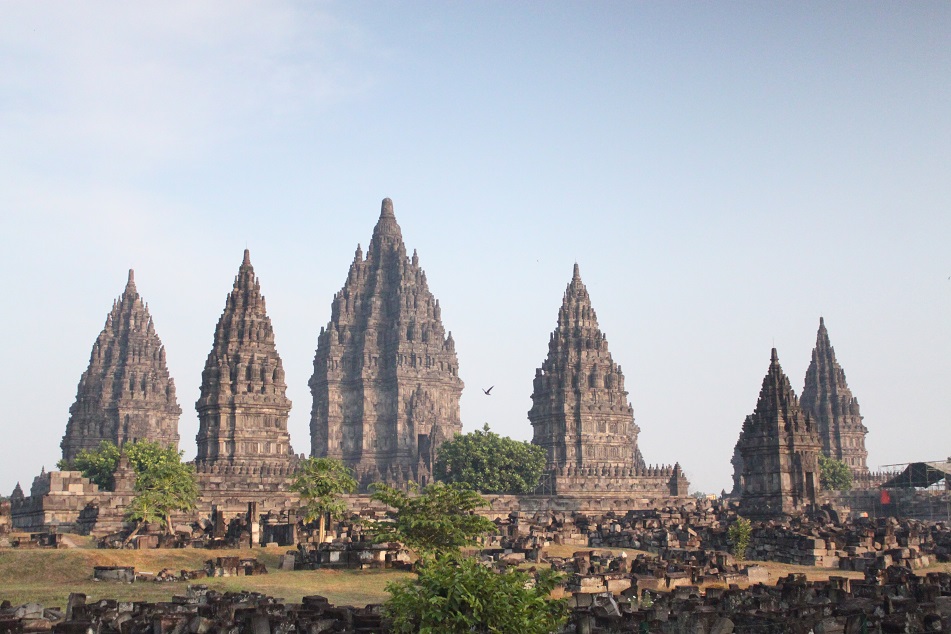
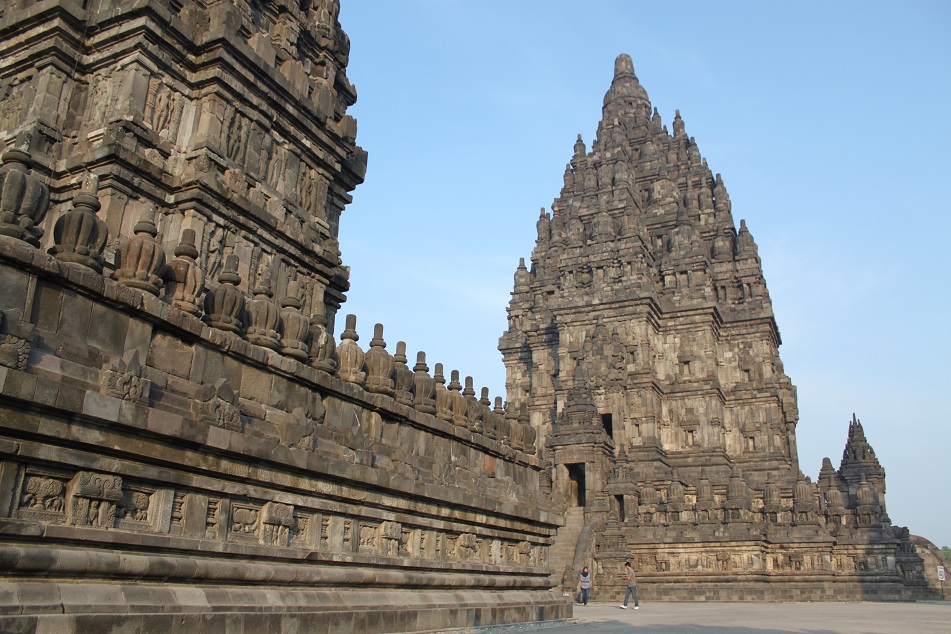
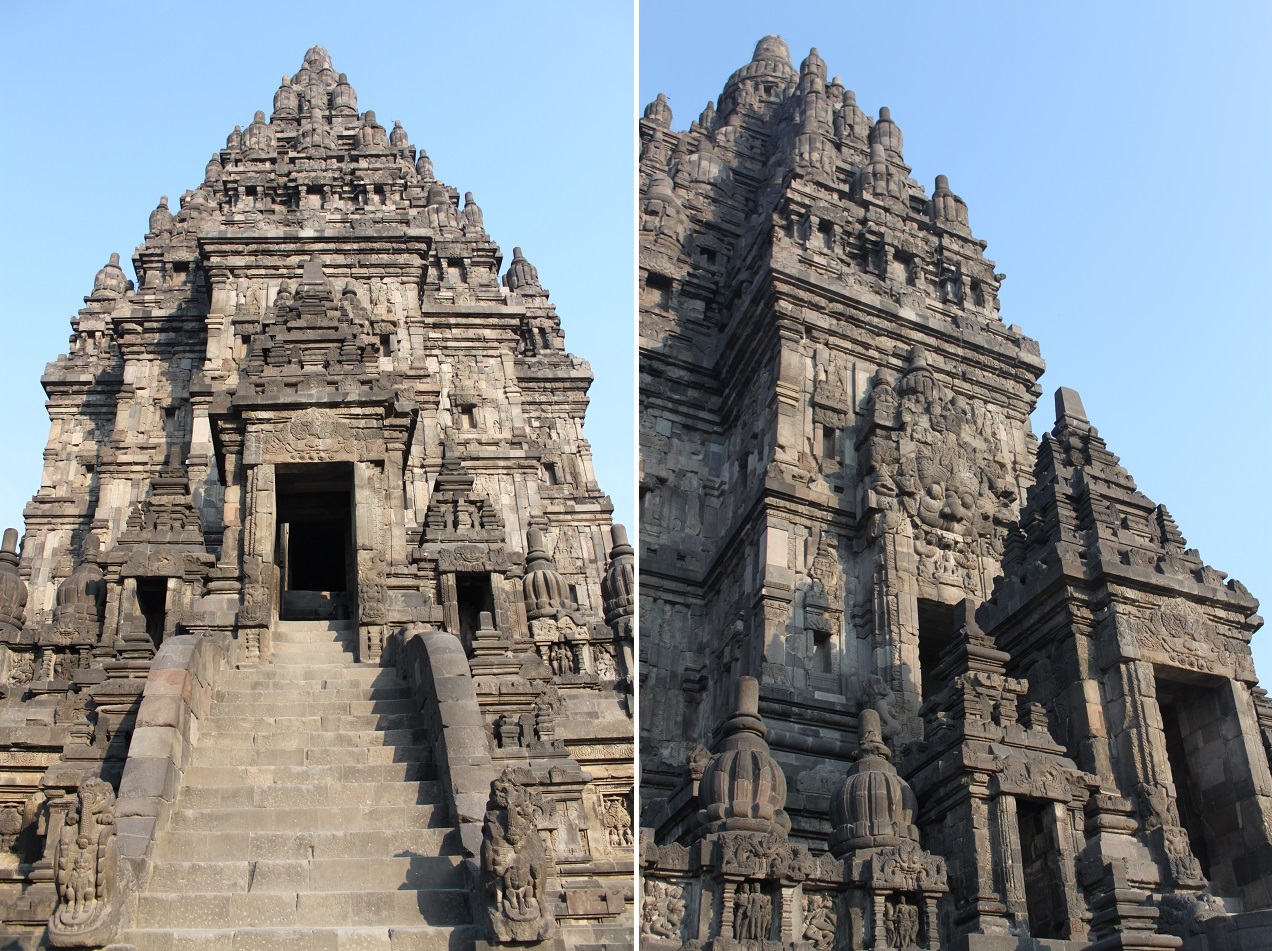
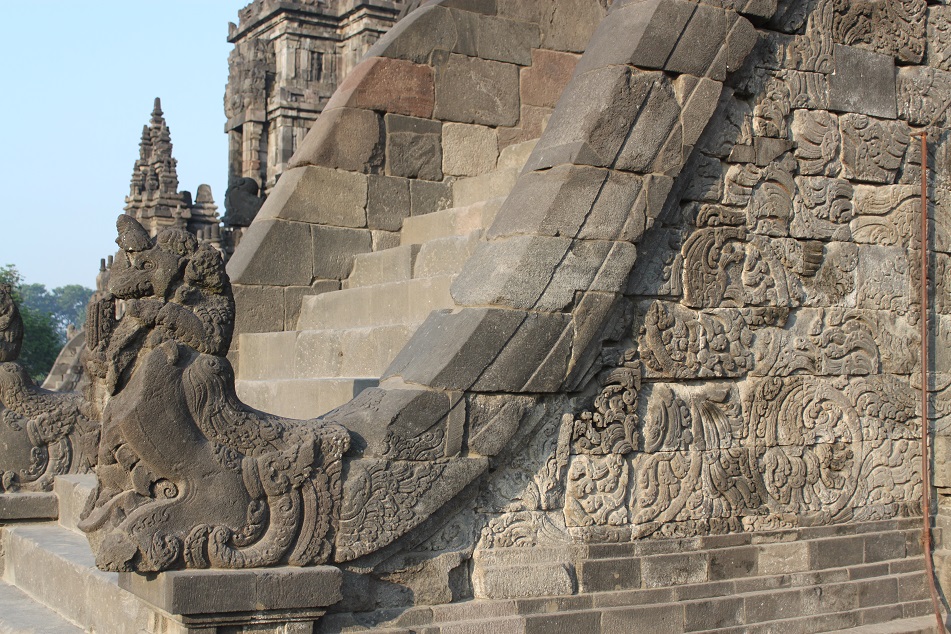
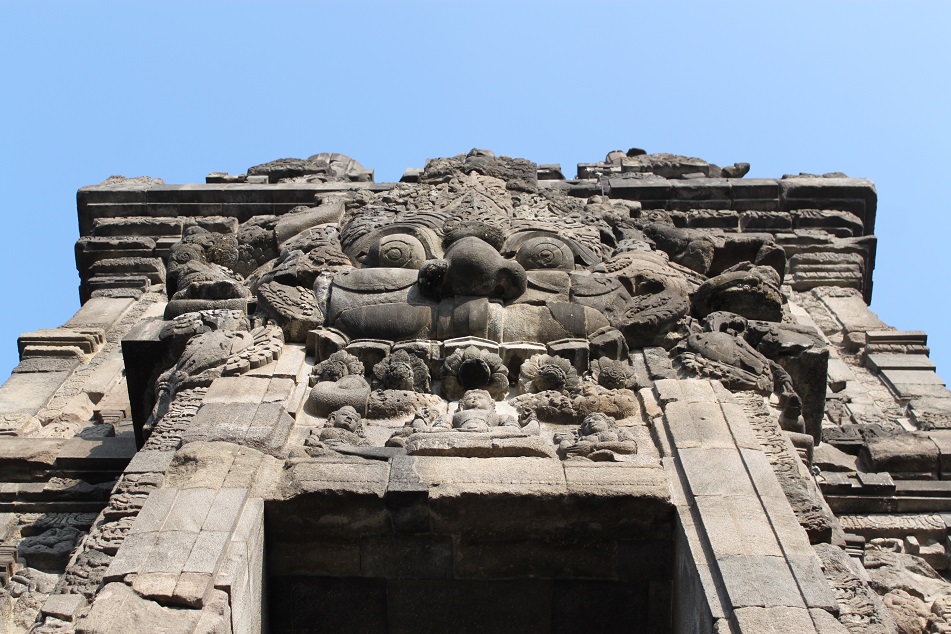
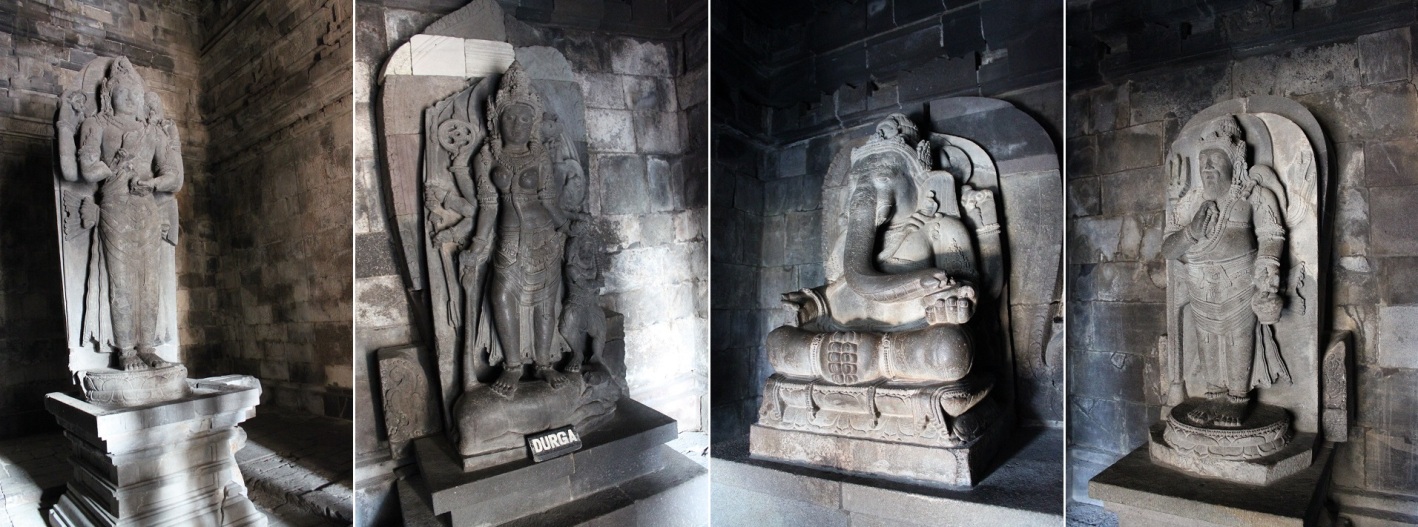
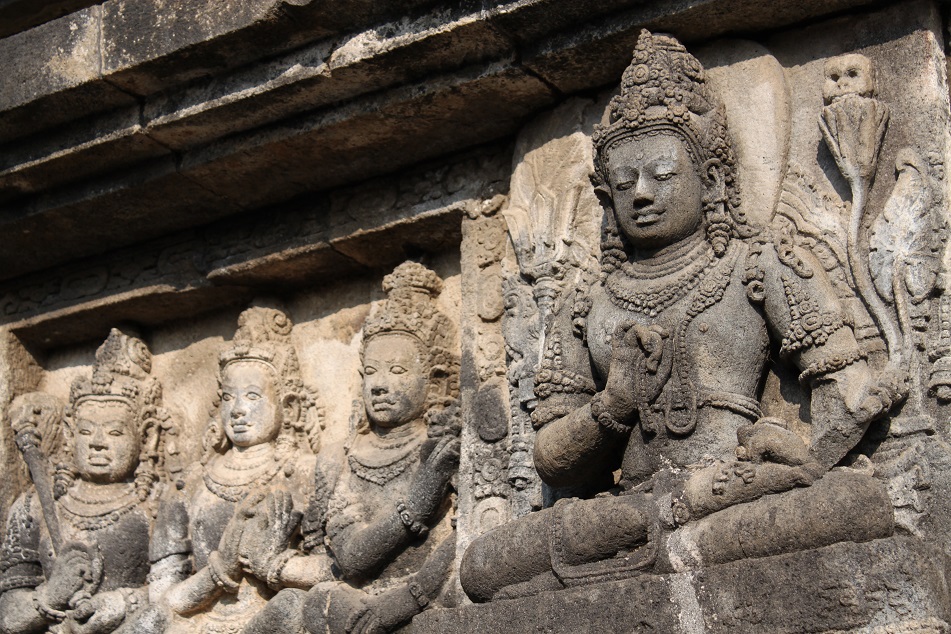

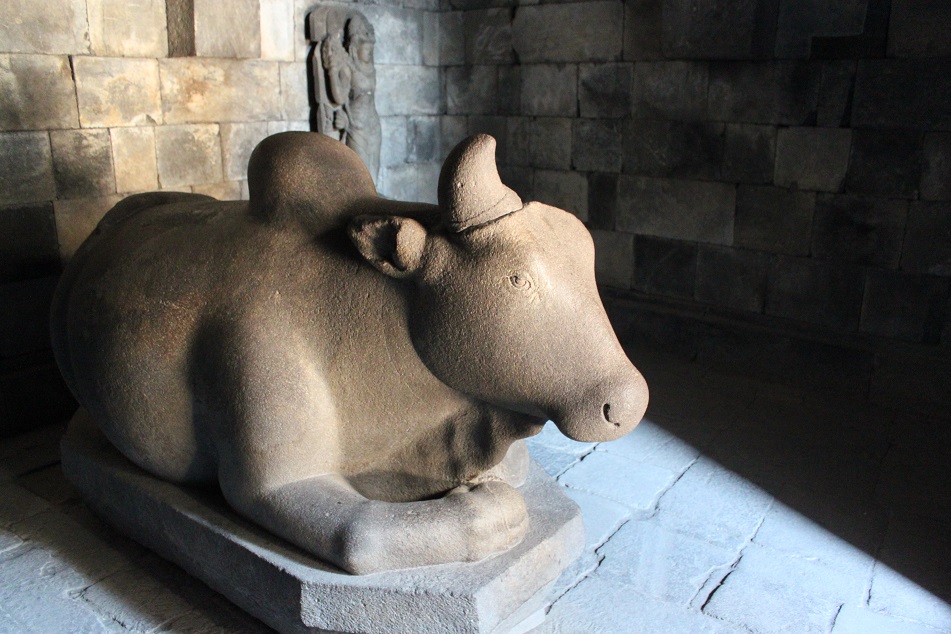

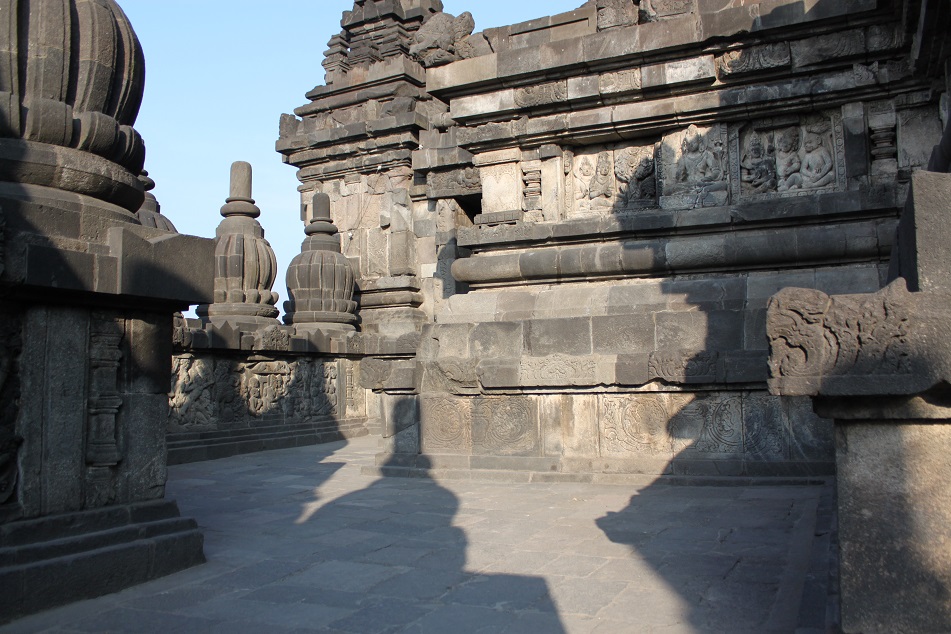

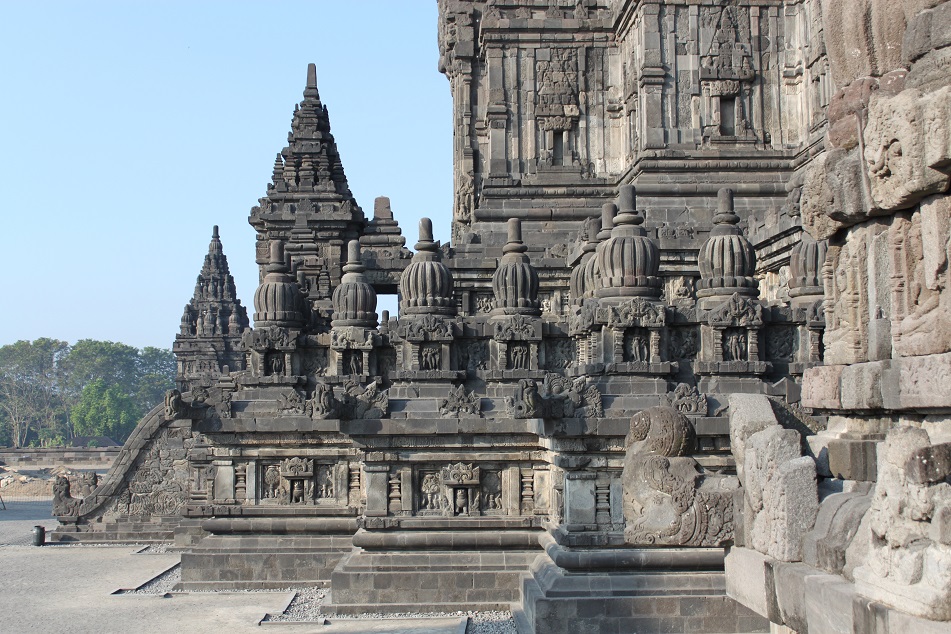
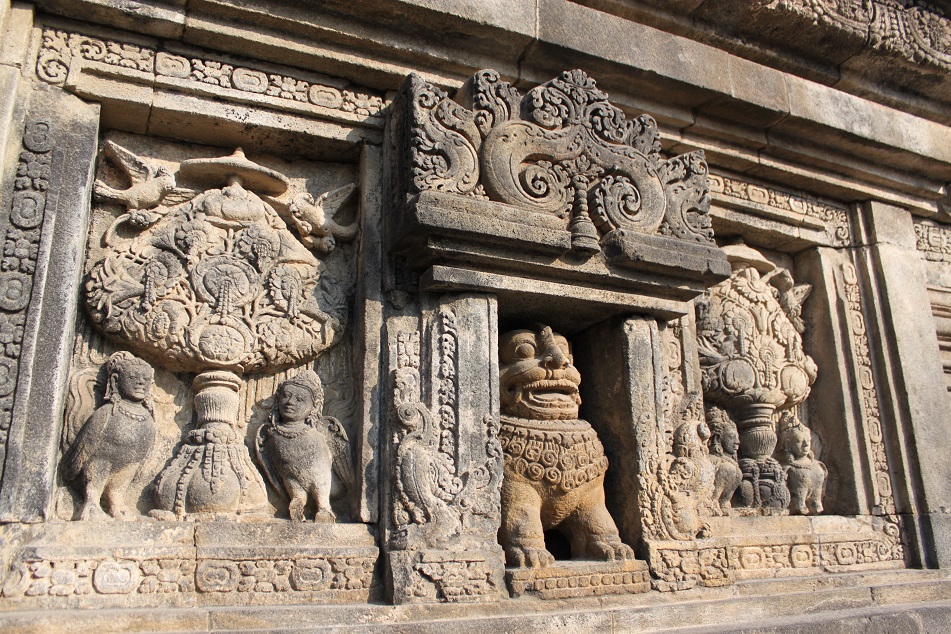
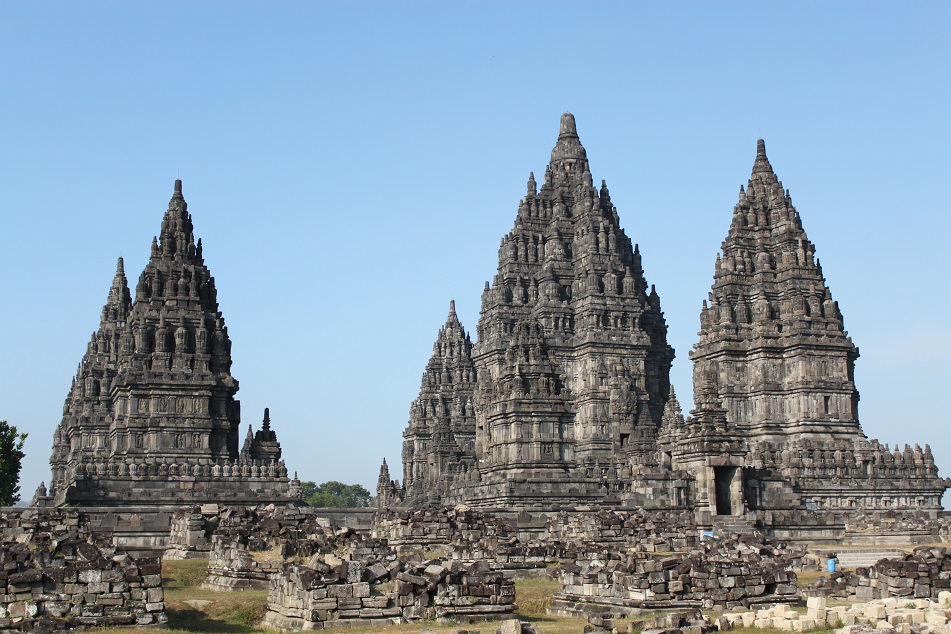
Absolutely fascinating.
LikeLike
It really is, Miriam. Despite being smaller compared to Borobudur, Prambanan was the one that piqued my interest toward ancient buildings a long time when I was a kid.
LikeLiked by 1 person
That’s wonderful.
LikeLike
Fotomu selalu berbicara banget. Like it. Candi Prambanan punya kisah besar dengan peninggalan yang masih menakjubkan. Entah kenapa lebih betah di Prambanan ketimbang Borobudur. Melihat relief-relief yang terukir di Candi Prambanan rasanya nggak ada bosannya. Nice share, Bama 🙂
LikeLike
Makasih Halim. Nah, sama kita. Entah kenapa Prambanan lebih meninggalkan kesan — mungkin karena dulu pas masih kecil lebih banyak baca cerita mengenai candi-candi di sekitar Prambanan.
LikeLike
Those photos look so natural, as if there wasn’t any other way you could have photographed them. I’m sure it was a lot of work to get these shots, though. Respect! 🙂 I wish I was able to do that! Which camera are you using?
LikeLike
That very kind of you, Katha. I went to Prambanan early in the morning, and it was a really nice and sunny day — both are the main reasons why the photos look natural, I guess. I have been using my Canon 500D for five years now.
LikeLike
Well said. I was impressed with how you captured the intricate details of the temple.
LikeLike
Thanks Jeff. You won’t believe the amount of photos of carvings, reliefs, statues, lintels, etc that I took from that six-month trip alone. I don’t know why but I’m always drawn to such intricate things.
LikeLike
Thanks for the information!
LikeLike
You’re welcome. And thanks for reading.
LikeLike
Great post Bama – I will have to revisit armed with more history – it is such an incredible site
LikeLike
Thanks! I myself always learn something new in each of my trip to Prambanan (and other temples around Jogja). With the beautiful carvings, massive scale, and rich history, those temples really never cease to amaze me.
LikeLiked by 1 person
I agree it’s hard to take in the layers of legends and the history of their construction – wonderful.
LikeLike
The amalgamation of both often makes a place even more fascinating.
LikeLike
Fantastic temples – and I think they are as complex as the history!
LikeLike
They truly are. It’s also unique for the three temples dedicated to the Trimurti — typically a Hindu temple compound is dedicated only to one of the three.
LikeLike
Amazing. I am so happy you are sharing these places with us. I am really enjoying them. Great detailed stories and your images are beautiful.
LikeLike
And I’m glad to know that this post gives you a glimpse of some of the most impressive ancient structures in this part of the world. Thanks for your kind comment!
LikeLiked by 1 person
Hi Bama, I thought it’s quite a tall order to match the magnificence of Borobudur. Having not seen them myself, it’s not easy to judge if Shivagrha has succeeded in matching Borobodur’s splendor but I hope it succeeded in harmonizing both Hindu and Buddhist presence in the region. From what I can see from your amazing photos, it is also such an epic construction with amazing details. The carvings remind me of some of the temple I’d seen in India.
LikeLike
It really was. There was nothing like Borobudur before, so for Rakai Pikatan to commission a new temple to match its massiveness was a rather ambitious plan, to say the least. Prambanan’s Shiva temple is indeed taller than Borobudur, but the entire compound was built in separate shrines, compared to Borobudur’s one gargantuan structure. Both Hinduism and Buddhism continued to coexist peacefully in Java, as my next post will provide a glimpse into it, but the cessation of alliance with Sumatra-based Srivijaya significantly reduced Medang’s power in the region. Speaking of the temples in India, Prambanan’s vimana (tall spire) also reminds me of the Chola temples I saw in Tamil Nadu.
LikeLike
There was something so magical about being there first thing in the morning, before the crowds descended on the temple complex. And it is mind-boggling to think that Borobudur and Prambanan were built only a few decades apart. You would expect archaeologists to unearth the remains of an ancient city nearby, but maybe it was only the temples (and the palace at Ratu Boko) that used such durable stone. As usual your shots of the reliefs are fabulous!
LikeLike
I had never been to Prambanan that empty before, so I was really glad that we came so early. It was only a few years ago did I realize that both Borobudur and Prambanan were built only a few decades apart, and that made me visualize the advanced and ambitious people who built them, as well as their lives — speaking of which, you’re right about the lack of remains of an ancient city in either Kedu or Prambanan plains. Maybe one day technology will be able to unveil that lost city. Makasih banyak, James.
LikeLiked by 1 person
Fotonya bagus. Detailnya keren.
salam
LikeLike
Terima kasih banyak untuk komentarnya, Alris. Really appreciate it.
LikeLike
The relief in that old stone almost defies comprehension, and the morning sunlight accents it so beautifully. Your travels in (and descriptions of) this part of the world have been so fascinating to me. I can’t wait to see it all for myself someday! (And if I never do, I will have seen spectacular views from you!)
LikeLike
Ancient people always amaze us with their craftsmanship and artistic achievement, don’t they? I really really hope you’ll get the chance to visit this part of the world, Lex. Just expect constant humidity and spicy food! 😀
LikeLiked by 1 person
damn so wonderful!
LikeLike
It surely is.
LikeLike
Pingback: Pramodhawardhani: the Buddhist Patroness in Hindu Java | What an Amazing World!
Pingback: Ratu Boko: A Palace of Conundrum | What an Amazing World!
Pingback: Puranas – Diverse body of Hindu myth | Earthpages.ca
Pingback: The Cholas: Conquerors from Southern India | What an Amazing World!
Paling suka Candi Sewu, so rustic and chaotic, yet so grandeur & magnificent! *kemudian jadi inget postingan candi-candi yang belum ditulis, hahaha*
Btw Rakai Pikatan nama yang bagus ya *mengalihkan perhatian*
LikeLike
Dan meskipun cuma sepelemparan batu dari Prambanan, tapi Candi Sewu selalu sepi. Ayo dong ditulis cerita candi-candinya.
Nah, kalo kamu Rangkaian Paketan. :p
LikeLike
https://harindabama.com/2015/11/01/three-months-across-indonesia/jawa01/, foto ini kelihatan megah banget. Harusnya orang Indonesia punya jurusan arsitek hebat, bangunan dulu saja bisa megah dan indah.
Ga motret situs Ratu Boko, Mas ? Tempatnya syuting Rangga dan Cinta
LikeLike
Terima kasih Mbak Maria. Sebetulnya di zaman modern pun Indonesia sudah menelurkan arsitek-arsitek hebat. Sayang banyak karya mereka yang tidak bisa terwujud karena alasan finansial dan kondisi ekonomi Indonesia yang kadang naik kadang turun. Untuk Ratu Boko saya banyak motret juga mbak. Foto-fotonya ada di blog post saya setelah Prambanan ini.
LikeLike
Pingback: Vijayanagara: the Golden Period | What an Amazing World!
Pingback: Candi Cetho: A Creation of Those Who Remained | What an Amazing World!
Nice 👍
LikeLike
Thanks!
LikeLike
Pingback: Bagan Rising | What an Amazing World!
ASSEMBLY OF GOD IN HINDUISM
By Promod Puri
Besides His numinous and varied perceptions God also offers a meaningful perspective which can be created by the assembly of good thoughts. And the divine residency begins in that on-going construction.
Basically it is an eloquent temperament we are trying to build which gives rationality and practicality to the institution of God.
The ecumenical concept of God of being the supreme governor who creates, sustains and destroys the universe, and everything else including what influences our lives, does not reveal the reasons behind all the puzzles and mysteries of His or Her observable deeds.
In other words our perception of God as being a creator with His mystical powers which sustains the universe, can not comprehend many universal and natural phenomenons.
One reason is that man is just one of the millions of creatures who in actuality is microscopic in His infinite and colossal universe. Still our imaginations and metaphysical attempts know no boundaries to fathom His magnanimity.
For a moment let us compare a human being to a small ant who is trying to study God up there in the celestial world.
Read More: https://promodpuri.com/2016/10/31/assembly-of-god-in-hinduism/
LikeLike
Thank you for sharing such a profound perspective in perceiving the Hindu pantheon.
LikeLike
Candi prambanan merupakan candi peninggalan sejarah kerajaan dahulu,kita patut lestarikan dan menjaga keasliannya.
LikeLike
Semoga seluruh masyarakat Indonesia juga memiliki semangat yang sama.
LikeLiked by 1 person
Pingback: Bounty from the Earth and Sea | What an Amazing World!
Pingback: Penataran: Appeasing the Mountain God | What an Amazing World!
Pingback: Ngempon, Twelve Centuries Later | What an Amazing World!
Pingback: Candi Badut: A Remnant of Kanjuruhan | What an Amazing World!
Pingback: Javanese Royal Palaces: Yogyakarta | What an Amazing World!
Pingback: Trowulan: An Ancient Javanese City | What an Amazing World!
Pingback: Sambisari & Kedulan: the Underground Temples | What an Amazing World!